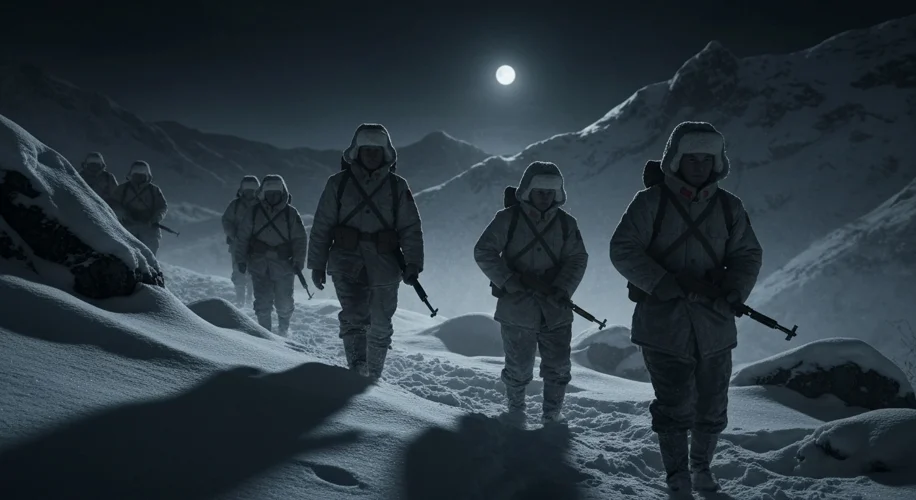The biting winds of November 1950 whipped across the rugged Korean peninsula, carrying not just the chill of winter but the chilling realization for UN forces: they were facing a new, formidable enemy. What began as a lightning-fast advance to push North Korean forces back across the 38th parallel had devolved into a brutal, grinding struggle against a relentless, unseen foe. This was the moment the Korean War transformed, pivoting from a police action to a full-blown international conflict, largely due to the massive and unexpected intervention of the People’s Volunteer Army (PVA) of China.
For months, General Douglas MacArthur’s United Nations Command (UNC) had enjoyed a string of stunning victories. Following the Inchon landing in September 1950, which dramatically reversed the early North Korean successes, UN forces had surged north, crossing the 38th parallel and advancing deep into North Korea. The initial objective of restoring South Korea’s sovereignty seemed within grasp, with Seoul recaptured and Pyongyang fallen. The triumphant march northward, however, blind-sided many in Washington and at the front lines about the true strategic calculus of China, a nation under the newly established Communist regime led by Mao Zedong.
Mao Zedong viewed the American advance as a direct threat to China’s own security. With UN forces, particularly American troops, nearing the Yalu River, the border between North Korea and China, Mao feared a hostile presence on his doorstep. He had repeatedly warned through diplomatic channels that China would not stand idly by. However, these warnings were largely dismissed by President Truman and his advisors, who either underestimated China’s resolve or believed the Soviet Union would prevent direct Chinese involvement. This miscalculation would soon prove catastrophic.
The first major clashes with Chinese forces occurred in late October and early November 1950. Initially, these were small-scale encounters, often involving ambushes and hit-and-run tactics. The PVA, numbering an estimated 300,000 soldiers, launched a surprise offensive that caught the dispersed and overconfident UNC forces completely off guard. These initial assaults were characterized by overwhelming numbers, night attacks, and a chilling disregard for casualties. The PVA employed a tactic known as “human wave attacks,” where waves of soldiers would charge enemy positions, overwhelming defenders through sheer mass and ferocity, even if it meant immense losses for themselves.

The Battle of the Chosin Reservoir, which began in late November 1950, became a defining moment of this phase. Stranded and surrounded by vastly superior Chinese numbers, the U.S. X Corps, particularly the 1st Marine Division, fought a desperate fighting withdrawal for two weeks. Under relentless assault in brutal sub-zero temperatures, the Marines, often described as “fighting backward,” inflicted heavy casualties on the PVA while suffering severely themselves. The conditions were horrific: frostbite was as deadly as bullets, and many soldiers froze to death in their sleep. The iconic image of the “Frozen Chosin” epitomizes the hellish nature of this encounter.
General MacArthur, still clinging to the hope of a swift victory, ordered his troops to advance again in late November, a decision that walked directly into Mao’s trap. The PVA’s second offensive, launched on November 25, 1950, shattered the UNC lines. The American Eighth Army collapsed and retreated in disarray, suffering some of the worst defeats in its history. The retreat from North Korea was a chaotic, brutal affair, marked by destroyed equipment, abandoned artillery, and the harrowing sight of thousands of wounded soldiers being evacuated. The dream of a unified Korea under UN auspices evaporated in the bitter Korean winter.
This massive Chinese intervention fundamentally altered the war’s trajectory. It transformed a war of maneuver into a brutal war of attrition. The front lines stabilized roughly around the 38th parallel by mid-1951, where they would largely remain for the next two years. The war devolved into a series of bloody battles for insignificant hills and strategic positions, characterized by trench warfare reminiscent of World War I. Battles like Pork Chop Hill, Heartbreak Ridge, and Old Baldy became symbols of the grinding stalemate.
The motivations behind China’s intervention were multifaceted. Beyond the immediate security threat, Mao sought to bolster the prestige of his new communist regime and assert China’s position on the world stage. He also believed that challenging American power would demonstrate the strength and resilience of the communist bloc, especially in the context of the burgeoning Cold War. For the United States, the intervention meant an expanded war, increased casualties, and a deep public division over its objectives and efficacy.
The consequences of the Chinese intervention were profound. It dashed hopes of a quick victory and led to a protracted and costly conflict. The war solidified the division of Korea, a partition that persists to this day. It also escalated Cold War tensions, pushing the United States and China into direct confrontation and hardening American policy towards communism globally. The economic strain on all parties was immense, and the human cost, with millions of casualties, was staggering. The Korean War, often called the “Forgotten War,” left an indelible scar on the peninsula and shaped geopolitical landscapes for decades.
The stalemate that ensued, characterized by brutal trench warfare and a lack of decisive breakthroughs, highlighted the limits of conventional military power against a determined and ideologically committed adversary willing to bear immense losses. It was a stark lesson for the West about the complexities of fighting in Asia and the resolve of communist forces. The frozen conflict on the Korean peninsula, frozen by more than just the winter winds, became a potent symbol of the Cold War’s ideological battleground, a testament to the devastating price of miscalculation and the unyielding spirit of national defense.

